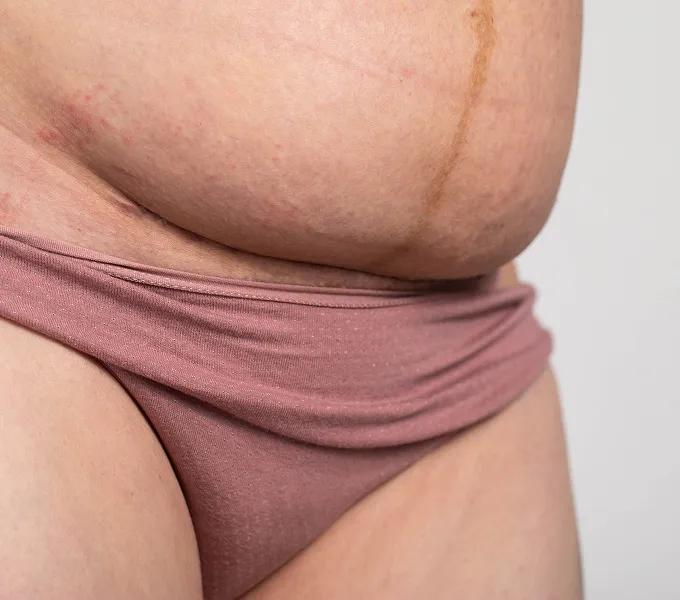
How to Clear a Clogged Duct with Gentle Breast Massage
A clogged milk duct is usually easy to spot: a sore and tender area of the breast or chest tissue that may feel almost like there is a grape under your skin. If you have one, your mission is to clear that clogged duct as quickly as possible, which can help prevent mastitis — when the entire breast or chest tissue is affected by inflammation and possibly infection.
Therapeutic Breast Massage in Lactation (TBML) is an extremely gentle — your fingers should barely brush the skin — yet powerful tool that may help to reduce pain and inflammation. If you’re currently seeing a postpartum physical therapist, they can determine if TBML is right for you and walk you through it, step by step. Otherwise, talk to your healthcare provider about incorporating this easy-to-use massage to treat a clogged duct and relieve engorged breast and chest tissue.
Clogged milk ducts: what's blocking your flow?
It is common to assume that a “clog” is caused by milk substances that are plugging the milk duct, preventing milk from flowing to the nipple. But a clogged duct actually happens with tissues surrounding the milk duct become inflamed. When milk that is made is not able to be cleared from the tissues, the pressure that builds up can create and inflammatory response that creates a mechanical pressure on the ducts, collapsing them from the outside.
Because inflammation contributes to the clog, it's no surprise that remedies that involve heat, deep massage, or intense vibration aren't likely to work well — they tend to make inflammation even worse.
A better strategy: By very gently massaging your breasts in the direction opposite of milk flow, you can encourage inflammatory substances to move through your lymph vessels, away from the area. By reducing inflammation, you're helping to clear the clog. This technique also triggers the release of oxytocin, which will help with milk letdown.
Check out the overview of Therapeutic Massage in Lactation and then check in with your lactation consultant, physician, or obstetrically trained physical therapist for more information on how to include this into your breast or chest care routine, improving milk flow and helping you to more naturally remedy clogged ducts before they turn into mastitis.
How to massage your breast to clear a clog
With TBML, you'll use feather-light strokes on the skin of the affected breast to encourage lymph and inflammatory substances to drain away from the nipple and toward lymph nodes in your neck or armpit. To make sure you're encouraging flow in the right direction, it helps to think of your breasts in quadrants.
Check out the chart below, paying particular attention to where the upper inside (UI) quadrants of your breast are located.

As you massage the affected breast, keep in mind that lymph in the UI quadrant of the breast drains up toward the neck, while the remaining three quadrants drain up and to the side, toward the armpit.
STEP 1: Stimulate your lymphatic system
Prep for your massage by getting your lymph moving. the lymph nodes in your abdomen can easily be stimulated with diaphragmatic breathing.
Stimulated the lymph nodes in your armpit with some gentle pumps on the side you are massaging.

After stimulating your lymphatic system, gentle massage is provided to the different quadrants of your lactating tissues to gently encourage inflammation to leave the area.
STEP 2: Massage the upper-inside quadrant of your breast
Start on the upper-inside quadrant of your breast or chest by reaching across with your opposite hand, placing the pinky side of your hand at your nipple (your fingertips will be pointing towards the armpit, and sweeping up to encourage fluid movement to the lymphatics in your neck. Feather-like strokes are continued as recommended by your healthcare provider.

STEP 3: Massage the other 3 quadrants
The remaining quadrants of the lactating tissue will drain to your armpit.
A two-hand technique, using one hand to scoop under the breast or chest and sweeping in a “J” shape from the lower-inside, to the lower-outside of your breast, and then up along the upper-outside of your breast or chest to your armpit. You can follow this path with your other hand in a rhythmic manner to provide massage as recommended by your healthcare provider.

MORE TIPS to avoid clogged ducts & mastitis
Focus on body mechanics.
Make sure you have optimal bodyfeeding posture. This will help keep your back, neck and wrists out of pain in the long run, and also help you and your baby feel comfortable so they can latch better.
Ease engorgement.
Place cool packs on your breasts (over your clothes, avoiding direct contact with your nipple) after you pump or feed. Chilled cabbage leaves are great for this as they are perfectly shaped for your breast!
Optimize your breast hygiene.
When showering, wash your breasts with warm water and a washcloth, but avoid soap. Opt to either let your nipples air dry or gently pat them dry since rubbing may irritate already irritated nipple tissue.
Support (but don't squeeze) your breasts.
A well-fitted nursing bra should provide gentle support but not compress your breasts (which can reduce milk production). Avoid underwires, as they can add pressure on milk ducts and increase your risk of developing a clog.
Exercise with comfort.
Try to time your workouts so they are right after you have pumped or fed the baby, and consider wearing two sports bras if you feel you need the extra support.
Find a healthcare provider for more info
If you are weaning or struggling with clogged milk ducts or other inflammatory conditions such as engorgement or mastitis, always check in with your healthcare provider for specific guidance. They will be able to personalize a care plan to get you on track with your lactating and health goals.
Special thanks to Dr. Jen Carr for sharing her insight on this wonderful massage technique. Jen is working on becoming a CLE (Certified Lactation Educator), and has been gracious in sharing what she has learned with our clinical team. Thank you Jen!




